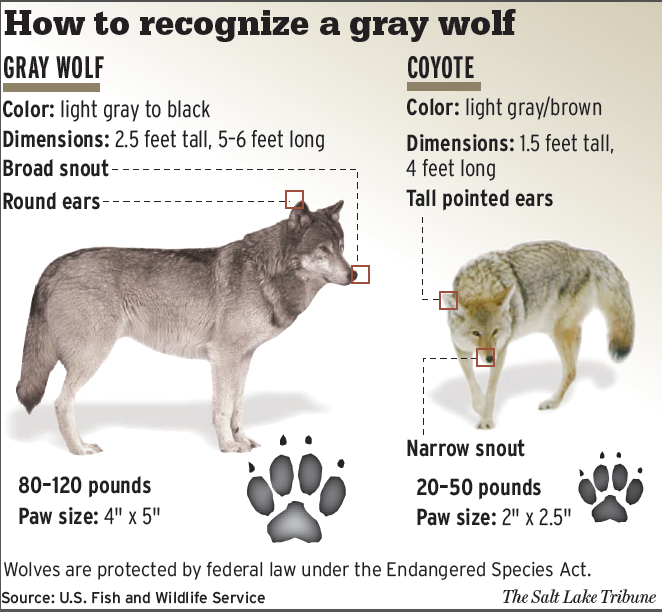There are no wolves in the wild in NJ (only in captivity) but coyotes are more common every year. And this is the time of the year you are more likely to see them.
I sometimes receive emails from residents of NJ who ask questions about wildlife. Occessionally, I can answer them, but sometimes I can only refer them to other sources at the NJDEP or private organizations.
I got an email this past week from Chris who was concerned that he might have spotted a wolf in his Mahwah, NJ backyard. It's a bit hard to see in his photos but they are most likely of a coyote. (Although he lives close to NY state and so... see http://www.catskillmountaineer.com/animals-coyotes.html )
 |
| http://wdfw.wa.gov/conservation/gray_wolf/wolf-coyote_compare.pdf |
I have written here before about our state's coyotes and certainly someone with small children and pets outdoors has some legitimate concerns with coyotes being near their home.
Although attacks on humans are extremely rare in eastern states, as with any predatory animal they can occur and in suburban and urban areas, and coyotes have occasionally attacked small pets.
Coyotes play an important role in the ecosystem, helping to keep rodent populations under control.
Coyote sightings in NJ usually increase in the spring as they bear their litters during April and May, and this is when encounters with humans is more likely to occur.
Females deliver between three and nine pups, and they are most likely to cross paths with humans (and their pets) as the adults forage for food for the pups in the spring and summer. They are far more interested in rabbits, mice, birds and other small animals. Of course, if we humans make garbage, pet food and our pets unattended, coyotes may be tempted to come closer to our homes. Like our Jersey black bears, they are very adaptable to and learning to be quite tolerant of human activities.
Eastern coyotes differ from their western counterparts with a larger average size and various color phases, including blonde, red and black.
 |
| coyote photo via http://www.state.nj.us/dep/fgw/ |
- put garbage in tightly closed containers that cannot be tipped over to prevent bear and coyote foraging.
- reduce the protective cover for coyotes by clearing brush and dense weeds from around homes.
- be more cautious about children and pets being on their own even in their backyards.
- in response to a coyote encounter, do not run, because that initiates the "prey instinct" in the animal and the coyote will go into pursuit mode. Rather, act aggressively - "yelling, waving your arms, stamping your feet, or throwing stones” until it leaves.



No comments:
Post a Comment